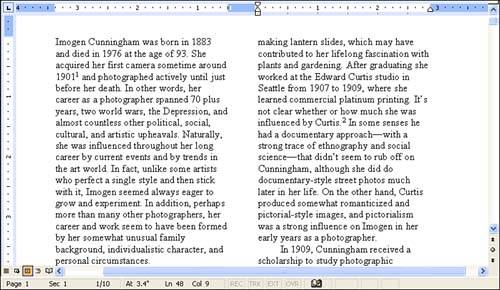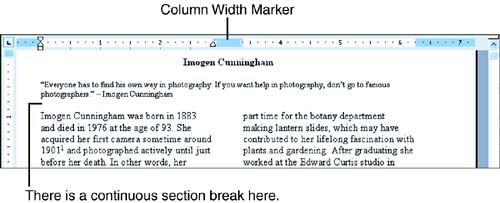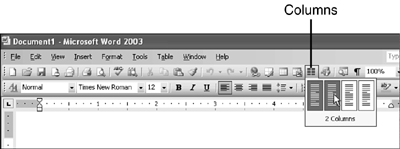Creating Columns
Creating ColumnsIf you plan to produce newsletters, bulletins , journal articles, and so on with relatively simple formatting, you'll appreciate Word's capability to format text in multiple columns. When you use this feature, the text snakes from column to column (see Figure 15.1). After you've formatted your text in columns, changing the number of columns is a breeze . (For highly formatted documents that use columns, you will probably want to use a layout program such as Publisher, which comes with several editions of Microsoft Office 2003.) Figure 15.1. This document is formatted in two columns. Columns fall into the page formatting category. As with other page formatting, columns apply to your entire document unless you insert section breaks around the text that you want in columns. For example, you might do this if you want a title above the columns that is centered in the middle of the page (see Figure 15.2). To do this, you need to insert a continuous section break between the title and the remainder of the document. Figure 15.2. A continuous section break separates the title from the rest of the text. You can then leave the default (single) column formatting in the first section, and apply two or more columns to the rest of the text. If you need help with section breaks, see the section "Varying the Page Formatting in Your Document" in Hour 8, "Formatting Pages." Follow these steps to format your text in columns:
Word creates the number of columns that you specified. If you decide to change the number of columns in your document, follow these steps again. To remove columns, click the leftmost column in the grid in step 3.
|
EAN: 2147483647
Pages: 315


